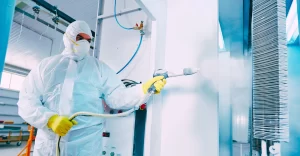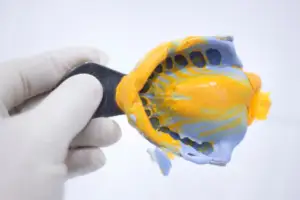Over the years, as material sciences have evolved, the manufacturing of lithium batteries has seen a paradigm shift in this domain. This material development series has Carboxymethyl Cellulose (CMC) emerging as one of the front-running materials, which carries enormous potential in providing improved performance and enhancing battery life. This section defines CMC binders, gives a historic development, and defines the pivotal role of CMC binders in battery technology.
Carboxymethyl Cellulose (CMC) Binders Definition: Carboxymethyl Cellulose, also known as CMC, is a water-soluble polymer and widely used as a binder for lithium battery electrodes. The major role of the binder is to hold the active material particles in the electrode and maintain contact between them and the current collector. In general, CMC binders are used during the production of lithium batteries because of the distinctive features that include better adhesion, high binding capacity, eco-friendliness, and great film-forming properties.
The change was initiated from the traditional Polyvinylidene Fluoride (PVDF) binders to CMC, as the industry was moving towards greener and more economical solutions. The growth of CMC binders comes with improvements that were aimed at increasing their chemical stability, conductivity, and compatibility with the different types of electrode materials. The shift led to increased adoption of CMC in the lithium battery industry by manufacturers, following the realization that the binder was instrumental in improving the battery performance with regard to cycle life and safe features.
They impart structural integrity for the electrodes, offering durability and efficiency in the operation of the battery system. It largely influences the electrochemical performance of the battery with reference to parameters of charge capacity, cycle stability, and rate capability. Among different kinds of binders, CMC is an important choice in the development of advanced lithium batteries from large-size cells to small-size cells for electronic device and vehicle applications. It is this that will now give a deeper insight into CMC binders, providing more information on their chemical properties, processing techniques, and finally, the overall impact they bring toward this burgeoning area of lithium battery technology.
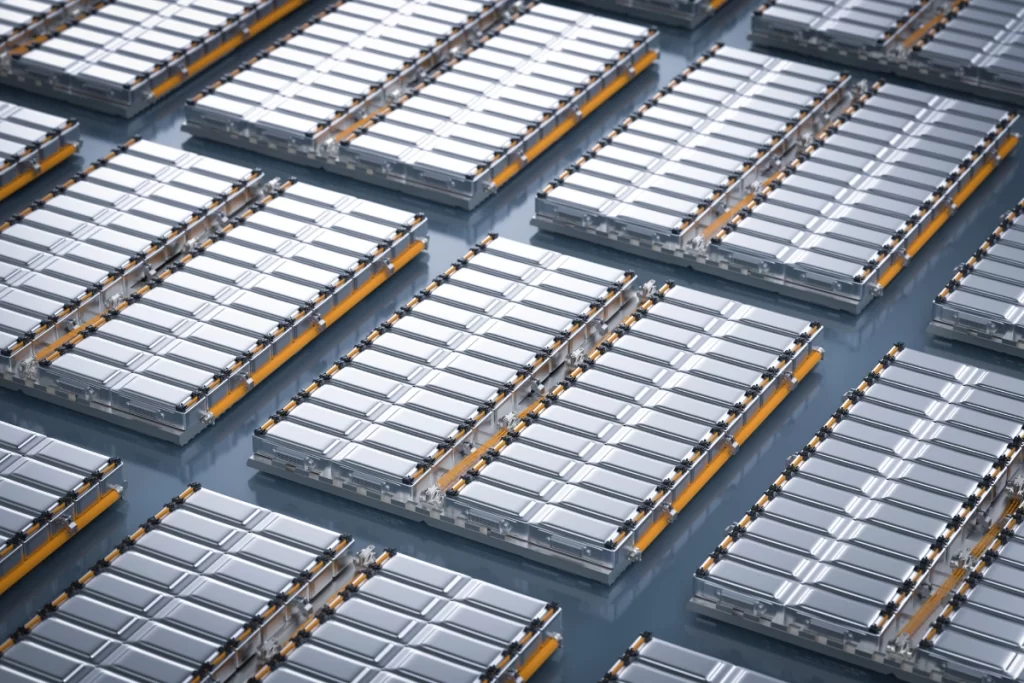
Chemical Composition and Properties of CMC Binders
CMC binders are broadly used in lithium battery manufacturing because of their intrinsic chemical composition and properties. This part of the binder briefs the detailed chemical structure of CMC, major properties, and a comparison with other binder materials.
Chemical Composition and Properties of CMC Binders
CMC: Carboxymethyl cellulose is a cellulose derivative where some of the hydroxyl groups present in the glucopyranose monomers get replaced by carboxymethyl groups.
- This substitution occurs by reacting with chloroacetic acid to convert the polymer into a highly hydrophilic and anionic product.
- CMC has a structure that can allow strong hydrogen bond formation, which accounts for the very good bind properties in the battery electrodes.
Important Properties: Viscosity, Molecular Weight, and Degree of Substitution
- Viscosity: CMC solutions have high viscosity, which is beneficial in actively, homogeneously dispersed material in the slurry of electrodes. This property has an impact on its coating behavior on the current collector.
- Molecular weight: Molecular weight of CMC will affect the solubility and the binding properties of CMC. Typically, a higher molecular weight will give stronger binders but can impact the porosity and electrical resistance of the electrode.
- Degree of Substitution (DS): The degree of substitution is such a factor that clearly defines the average number of hydroxyl groups per glucose unit. It has a very strong influence on the solubility, stability, and binding strength of CMC. Generally, an increase in DS will lead to an increase in solubility and electrochemical stability.
Other Binder Materials
In contrast to traditional Polyvinylidene Fluoride (PVDF) type binders, CMC is friendlier environmentally due to its biodegradability and non-necessity of toxic solvents in the processing. • CMC also presents better adhesion properties and mechanical flexibility compared to PVDF, which is fundamental in maintaining electrode integrity during the charge-discharge circles. • CMC offers stronger binding strength and less swelling tendency in electrolyte compared to other water-based binders, e.g., Styrene-Butadiene Rubber (SBR), promising a higher cycle life and safety.
The knowledge of the chemical composition and properties of CMC binders is indispensable for the optimization of their use in lithium battery manufacturing. These properties determine not only the ways of processing and application but also the performance properties of the final battery product.
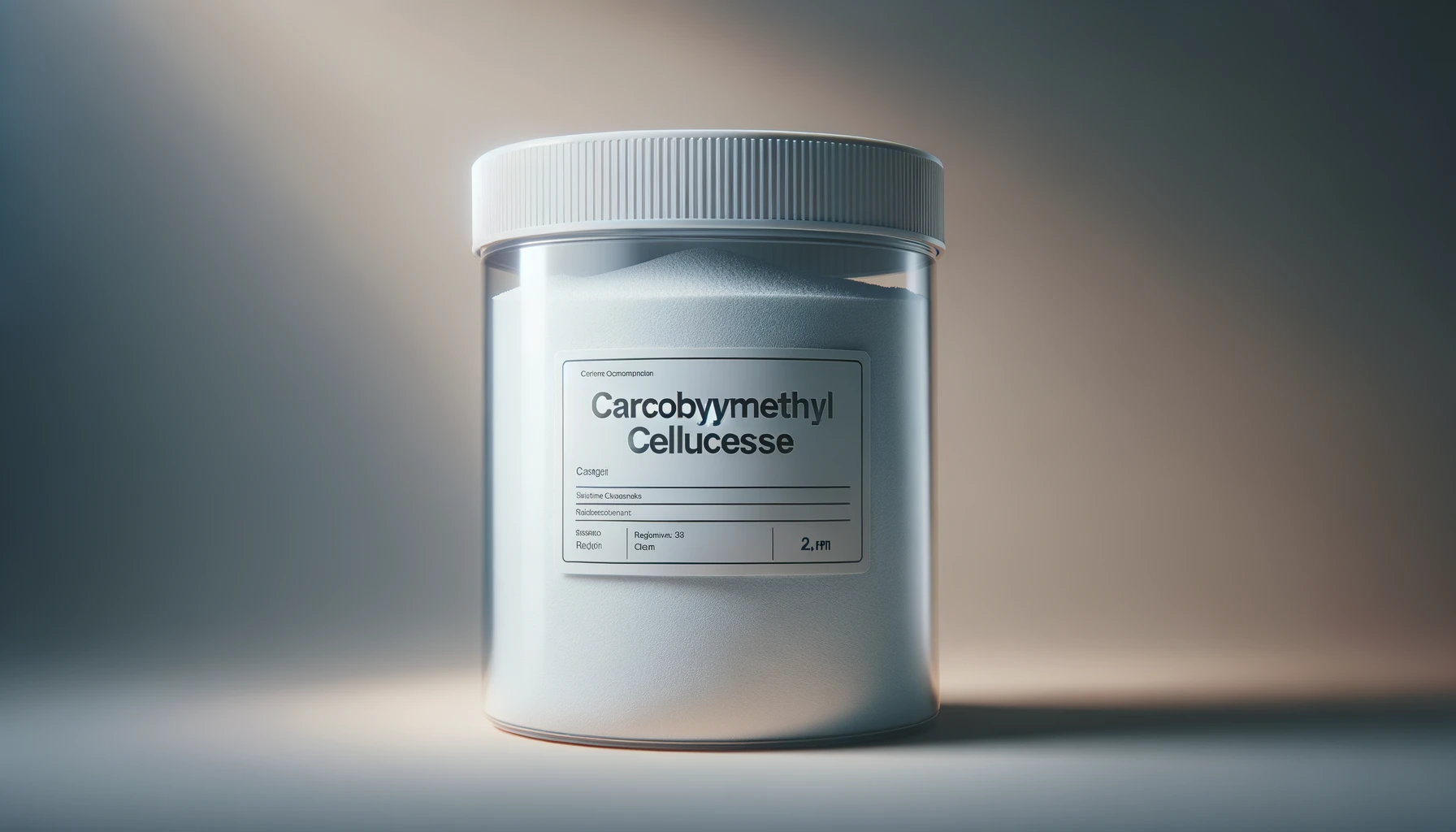
The Role of CMC Binders in Lithium Battery Manufacturing
The adoption of Carboxymethyl Cellulose (CMC) binders in lithium battery manufacturing marks a significant advancement in electrode formulation and overall battery performance. This section focuses on the functionality of CMC in electrode formulation and its impact on critical battery performance parameters such as capacity, cycle life, and safety.
Functionality of CMC in Electrode Formulation
- Binding Agent: CMC serves as a binding agent in the electrode slurry, ensuring the cohesion of active material particles and their adhesion to the current collector. This role is vital for the structural integrity of the electrode.
- Facilitates Uniform Dispersion: The high viscosity of CMC aids in achieving a uniform dispersion of active materials and conductive additives in the electrode slurry. This uniformity is crucial for consistent electrochemical reactions throughout the battery cell.
- Enhances Electrode Porosity: CMC contributes to the controlled porosity of electrodes. Proper porosity is essential for effective ion transport during charging and discharging, influencing the overall efficiency and rate capability of the battery.
Impact on Battery Performance Parameters
- Capacity: CMC binders help maintain the structural integrity of electrodes during repeated charging and discharging cycles, which is crucial for sustaining the battery’s capacity over time.
- Cycle Life: The mechanical stability provided by CMC binders reduces the degradation of electrodes, thereby extending the cycle life of lithium batteries. This is particularly important for applications requiring long-term reliability, such as electric vehicles and energy storage systems.
- Safety: By improving the adherence of electrode materials and reducing the risk of material detachment, CMC binders enhance the overall safety of lithium batteries. This is especially critical in preventing short circuits and thermal runaways, common safety concerns in battery technology.
The role of CMC binders in lithium battery manufacturing is multifaceted, directly influencing the electrochemical performance and longevity of the battery. By ensuring better structural integrity and uniformity in electrodes, CMC binders play a pivotal role in advancing lithium battery technology towards higher efficiency, durability, and safety standards.
Advantages of Using CMC Binders in Lithium-Ion Batteries
Environmental, improved adhesion, and flexibility are the major benefits that come with using CMC binders in lithium-ion batteries. Some of the major benefits that place carboxymethyl cellulose (CMC) binders ahead of traditional binder materials in the manufacture of lithium-ion batteries include their environmental benefits, mechanical stability, and the improved adhesion and flexibility they bring to lithium-ion batteries.
Environmental: Non-toxic and biodegradable
- Composition: CMC is an eco-friendly, non-toxic, environmentally benign derived option from cellulose. The aspect is increasingly important when industries are looking for sustainable manufacturing practice.
- Biodegradable Property: CMC is biodegradable, but this is not so in the case of synthetic polymers. This feature makes the least impact on the environment when batteries are disposed of at the end of their life and is a real concern with electronics.
- Fewer harmful solvents: The use of CMC in battery manufacturing does not require toxic solvents, which are needed for processing many synthetic binders, so it reduces the ecological footprint in battery production.
Mechanical stability and durability under varied operational conditions:
- Better integrity of electrodes: CMC binders are important to ensure better mechanical stability of electrodes that can hold their integrity even under the duress of charge and discharge cycles.
- Swelling and deterioration resistance: CMC is resistant to swell and deteriorate in any type of electrolytic environment, which is very important for maintaining the performance of the battery at varied temperatures and operational stresses.
- Long-term performance: CMC binder batteries show a consistent performance over a longer period, as its binder does not degrade much under harsh operational conditions.
More Adhesive and Flexible Electrode
- Excellent adhesion quality: CMC adheres well, hence forming an excellent condition for bonding between the active material and current collector, which results in low risks of detachment. It also has flexibility in electrode design.
- Utilization of the Electrode of Design Flexibility: Its utilization in electrolyte binders allows one to design electrodes of varying composition materials and thickness based on the battery specification per application.
- Less Cracking and Peeling: CMC provides the flexibility of reducing cracking and peeling chances of the electrodes over the expansion-contraction cycles of the battery, hence enhances general durability and reliability of the battery.
It is not only effective but also applies to the rising demand for ecologically friendly materials in the inclusion of CMC binders in lithium-ion batteries. CMC will, therefore, greatly enhance the mechanical stability, longevity, and functional flexibility of the batteries. It is these advantages that place CMC as pivotal material for future development in advanced lithium-ion battery technologies.
Processing Techniques and Application Methods
The processing techniques and application methods of Carboxymethyl Cellulose (CMC) in lithium-ion battery electrode manufacturing are crucial for optimizing the performance of the final product. This section delves into the mixing and application processes of CMC in electrode manufacturing and the factors that affect the effectiveness of CMC binders in slurry preparation.
Mixing and Application Processes for CMC in Electrode Manufacturing
- Slurry Preparation: The process begins with the preparation of a slurry, where CMC is mixed with active materials (like lithium cobalt oxide for cathodes or graphite for anodes) and conductive additives in a solvent. The homogeneity of this mixture is critical for consistent quality.
- Viscosity Control: The viscosity of the slurry is carefully controlled, often by adjusting the concentration of CMC. The viscosity needs to be optimal for coating processes and to ensure uniform distribution of particles.
- Coating and Drying: The slurry is then coated onto a current collector (such as copper for anodes or aluminum for cathodes). After coating, the solvent is evaporated in a controlled drying process, leaving behind a uniform electrode film.
Factors Affecting the Effectiveness of CMC Binders in Slurry Preparation
- CMC Concentration: The concentration of CMC in the slurry impacts its viscosity and binding properties. Too high a concentration can lead to a too thick or viscous slurry, while too low can result in poor binding.
- Solvent Choice: The type of solvent used can affect the solubility of CMC and the overall stability of the slurry. Solvents are chosen based on their evaporation rate, compatibility with CMC, and environmental impact.
- Mixing Parameters: Parameters such as mixing speed, temperature, and duration are crucial. Proper mixing ensures the uniform distribution of CMC and other components, crucial for the electrode’s electrochemical performance.
- Particle Size Distribution of Active Materials: The size and distribution of active material particles influence the slurry’s rheology. CMC must effectively bind these particles, which varies in size, to ensure a stable electrode structure.
Understanding and optimizing these processing techniques and factors are key to leveraging the benefits of CMC binders in lithium-ion battery manufacturing. Proper application of CMC not only improves the quality and performance of the batteries but also contributes to the consistency and reliability of the manufacturing process.
Challenges and Solutions in Using CMC Binders
While Carboxymethyl Cellulose (CMC) binders offer numerous advantages in lithium-ion battery manufacturing, there are also specific challenges that need to be addressed. This section explores common issues encountered during the manufacturing and usage of CMC binders, along with strategies to optimize their performance.
Common Issues Faced During Manufacturing and Usage
- Slurry Viscosity Management: One of the primary challenges is managing the viscosity of the electrode slurry. If the slurry is too viscous, it can lead to uneven coating, while a too-thin slurry may not bind the particles effectively.
- Inconsistent Electrode Quality: Variability in the mixing process or CMC quality can result in inconsistent electrode quality, affecting battery performance.
- Compatibility with Electrolyte: CMC binders need to be compatible with the electrolyte to prevent adverse reactions, which can degrade battery performance over time.
- Environmental Sensitivity: CMC is sensitive to environmental conditions such as humidity and temperature, which can affect its handling and storage.
Strategies to Optimize CMC Binder Performance
- Optimizing CMC Concentration: Careful control of the CMC concentration in the slurry is essential. Finding the optimal balance can mitigate viscosity issues and ensure effective particle binding.
- Quality Control in Manufacturing: Implementing stringent quality control measures during the mixing and coating processes can reduce variability and improve electrode consistency.
- Advanced Mixing Techniques: Utilizing advanced mixing techniques, such as high-shear mixing, can help achieve a more homogeneous slurry, leading to more uniform electrode coatings.
- Environmental Control: Maintaining controlled environmental conditions during storage and processing of CMC can prevent degradation and ensure consistent performance.
- Custom Formulation of CMC: Developing custom formulations of CMC tailored to specific battery chemistries and manufacturing processes can enhance compatibility and overall battery performance.
- Collaboration with Suppliers: Working closely with CMC suppliers to understand and mitigate the variations in CMC properties can lead to more consistent binder performance.
Addressing these challenges and implementing effective strategies are crucial for harnessing the full potential of CMC binders in lithium-ion battery manufacturing. By doing so, manufacturers can significantly enhance the quality, performance, and reliability of their batteries.

CMC Binders and Battery Performance: Case Studies and Industry Applications
The real-world applications of Carboxymethyl Cellulose (CMC) binders in commercial lithium batteries provide valuable insights into their performance benefits. This section focuses on analyzing case studies and industry applications of CMC binders, along with a comparative evaluation of their performance metrics against other binder materials.
Analysis of Real-World Applications in Commercial Lithium Batteries
- Electric Vehicles (EVs): Many EV manufacturers have incorporated CMC binders in their battery designs. Case studies show improved battery life and stability, critical for the longevity and safety of EV batteries.
- Consumer Electronics: In devices like smartphones and laptops, CMC binders have contributed to thinner, more efficient batteries, enhancing device portability and usage time.
- Energy Storage Systems (ESS): For large-scale energy storage, CMC binders have been used to enhance the durability and cycle life of batteries, crucial for sustainable energy management.
Comparative Performance Metrics with Other Binder Materials
- Cycle Life Comparison: Studies have shown that batteries with CMC binders exhibit a longer cycle life compared to those using traditional binders like PVDF, primarily due to the superior mechanical stability of CMC.
- Capacity Retention: Batteries utilizing CMC binders often demonstrate better capacity retention over time. This is attributed to the effective adherence and integrity of electrode materials maintained by CMC.
- Safety Metrics: Safety tests indicate that batteries with CMC binders are less prone to issues like thermal runaway and short-circuiting, thanks to the stable and secure electrode structure facilitated by CMC.
- Environmental Impact: Comparatively, CMC binders are more environmentally friendly than synthetic binders like PVDF, contributing to a reduced carbon footprint of battery manufacturing and disposal.
Through these case studies and comparative analyses, the advantages of CMC binders in enhancing battery performance and sustainability become evident. The insights gained from real-world applications underscore the growing importance of CMC binders in advancing lithium battery technology across various industries.
Future Trends and Innovations in CMC Binder Technology
The landscape of Carboxymethyl Cellulose (CMC) binder technology is rapidly evolving, with ongoing research and development promising to revolutionize the way lithium batteries are manufactured and used. This section explores the emerging trends and innovations in CMC binder technology, and their potential future applications and impacts on battery technology.
Emerging Research and Developments in CMC Binders
- Nanostructured CMC Binders: Research is focusing on developing nanostructured CMC binders that offer enhanced performance characteristics, such as improved ion conductivity and mechanical strength.
- Hybrid Binder Systems: Innovations include the development of hybrid binders that combine CMC with other materials to enhance specific properties, such as thermal stability and electrolyte wettability.
- Environmentally Sustainable Production: Efforts are being made to produce CMC in more environmentally sustainable ways, including the use of green chemistry methods and renewable resources.
Potential Future Applications and Impacts on Battery Technology
- Advanced Energy Storage Solutions: CMC binders are expected to play a key role in the development of next-generation energy storage solutions, including solid-state batteries and supercapacitors.
- Improved Battery Safety and Longevity: With the ongoing development of CMC binders, future lithium batteries are anticipated to have significantly improved safety profiles and longer lifespans, making them more suitable for applications in electric vehicles and large-scale energy storage.
- Customizable Battery Performance: The versatility of CMC binders could lead to more customizable battery formulations, tailored to specific applications such as ultra-fast charging or high-temperature operation.
- Lowering Manufacturing Costs: As CMC technology matures, it has the potential to lower manufacturing costs of lithium batteries, making them more accessible for a wider range of applications.
The future of CMC binder technology is bright, with ongoing research poised to unlock new possibilities in battery performance and sustainability. These advancements are expected to have a substantial impact on various industries, pushing the boundaries of what is currently achievable in energy storage and management.
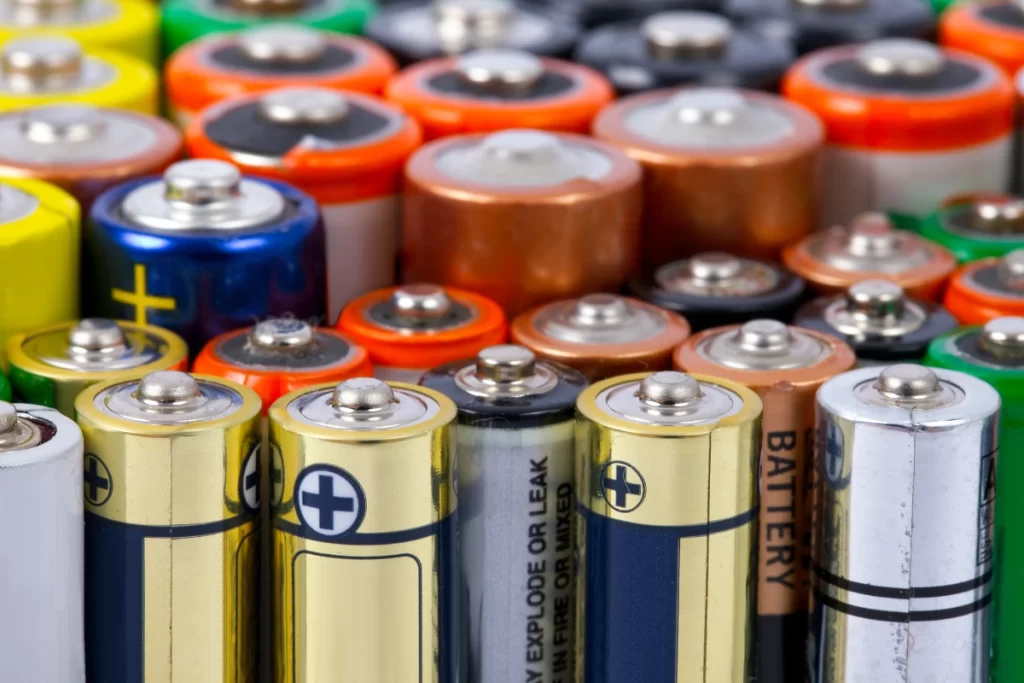
Application of CMC Binders for Battery
The application of Carboxymethyl Cellulose (CMC) binders in battery technology, particularly in lithium-ion batteries, is a crucial aspect of modern battery manufacturing. CMC binders play a significant role in improving the performance, efficiency, and sustainability of these batteries. Here’s an overview of how CMC binders are applied in battery technology:
Electrode Binder for Lithium-ion Batteries: Incorporate 1.2% CMC as a binder in the anode material of lithium-ion batteries to improve adhesion and maintain structural integrity during charge-discharge cycles.
Viscosity Modifier in Electrode Slurries: Use 1.3% CMC in electrode slurries to adjust viscosity, ensuring uniform coating on the current collector and enhancing the manufacturing process of lithium-ion batteries.
Stabilizer in Solid Electrolyte Interphase (SEI) Formation: Add 1% CMC in the anode composition to stabilize the SEI layer formation, crucial for the longevity and safety of lithium-ion batteries.
Binder in Sodium-ion Batteries: Utilize 1.5% CMC as a binder in sodium-ion batteries to enhance electrode integrity and performance, providing a cost-effective alternative to lithium-ion batteries.
Adhesion Promoter in Flexible Batteries: Incorporate 2% CMC in the fabrication of flexible battery electrodes to improve adhesion on bendable substrates, essential for wearable and foldable electronics.
Performance Enhancer in Supercapacitors: Mix 1% CMC in supercapacitor electrodes to increase the electrical conductivity and charge storage capacity, boosting the efficiency of energy storage devices.
Binder in Nickel-Metal Hydride Batteries: Employ 1.4% CMC as a binder in nickel-metal hydride batteries to ensure electrode stability and enhanced energy density, suitable for high-performance applications.
Conductivity Improver in Lead-Acid Batteries: Add 1.1% CMC in the lead-acid battery electrodes to improve the ionic conductivity and battery efficiency, especially in automotive and industrial power storage systems.
Conclusion
In summary, Carboxymethyl Cellulose (CMC) binders have emerged as a transformative component in the field of lithium battery technology, offering significant benefits while also presenting unique challenges.
Key benefits of CMC binders include their environmental friendliness, being non-toxic and biodegradable, which aligns with the global shift towards sustainable manufacturing practices. Additionally, CMC binders contribute to enhanced mechanical stability and durability of lithium batteries under various operational conditions. They also improve the adhesion and flexibility of electrodes, leading to better battery performance and longevity.
However, challenges such as managing slurry viscosity, ensuring consistency in electrode quality, and compatibility with electrolytes remain. These are being addressed through continuous research and innovation in binder technology and manufacturing processes.
Looking to the future, CMC binders are set to play a pivotal role in advancing lithium battery technology. Their potential in enabling more sustainable, safe, and efficient batteries positions them as a key material in the evolution of energy storage solutions. As research continues to push the boundaries of what’s possible with CMC binders, we can expect to see lithium batteries becoming even more integral to various industries, especially in fields like electric vehicles, consumer electronics, and large-scale renewable energy storage.
The trajectory of CMC binder technology not only signifies a step forward in technical innovation but also marks a significant stride towards a more sustainable and energy-efficient future.



